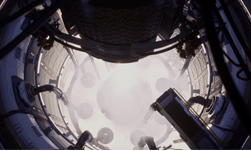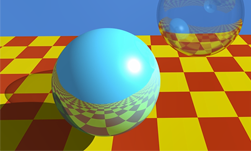Learn More about Hybrid Approaches and Systems for Ray Tracing for FREE in Part VI of Ray Tracing Gems.
In this installment of Ray Tracing Gems, we take a look at hybrid approaches and systems for ray tracing. Rasterization is still a critical technique to employ, alongside ray tracing. “Ray Tracing Gems Part VI” can be downloaded at NVIDIA Developer Zone.
Here is the forward for Part VI, written by Morgan McGuire, distinguished research scientist at NVIDIA:
“Sometimes a ‘gem’ is more than just a good algorithm or implementation – it is a design for a system. The chapters in this part of the book present five systems for hybrid rendering using GPU ray tracing and rasterization together. They cover a range of application targets and scales to provide good ideas for every real-time rendering program.
“Chapter 23, ‘Interactive Light Map and Irradiance Volume Preview in Frostbite,’ presents a comprehensive tool for using ray tracing to speed entertainment production. For two decades, film and game artists’ lighting workflow frequently has been limited by the long process of
‘baking’ global illumination. In this chapter the Frostbite game engine team describes in detail their hybrid rendering system for rapid previewing of full global illumination.
“Chapter 24, ‘Real-Time Global Illumination with Photon Mapping,’ describes a method for simulating global illumination by tracing light forward from the emitters and then applying it to surfaces rasterized or ray traced backward from the camera. This system can handle cases such as bright caustics caused by specular reflection and refraction for which path tracing is slow to converge. More importantly, it provides a stable way of caching and amortizing light paths across many pixels.
“Chapter 25, ‘Hybrid Rendering for Real-Time Ray Tracing,’ gives the implementation details and lessons learned from the PICA PICA demo produced by the SEED game developer research group at Electronic Arts. It is a comprehensive system for global illumination within game-like resource constraints. The chapter presents targeted methods for ray tracing transparency, ambient occlusion, primary shadows, glossy reflection, and diffuse interreflection, and then describes how to combine them with rasterization into a complete hybrid rendering system.
“Chapter 26, ‘Deferred Hybrid Path Tracing,’ presents a path tracer using aggressive new spatial data structure radiance caching techniques. It produces high-quality interactive flythrough renderings of static scenes using only seconds of pre-computation suitable for the authors’ architectural visualization application.
“Chapter 27, ‘Interactive Ray Tracing Techniques for High-Fidelity Scientific Visualization,’ describes multiple ray tracing techniques appropriate for scientific visualization, where the combination of high quality and interactivity can enable new insights for domain experts without computer graphics expertise.
“These chapters show how ray tracing has become a powerful tool in the tool chest, both for interactive rendering and fast previewing of baked effects. Improving the speed and ease of use of operations such as BVH traversal and ray/triangle intersection opens up new opportunities. Expect to see much more research and development of hybrid approaches in the years ahead.”
DOWNLOAD RAY TRACING GEMS PARTS I, II, III, IV, V, and VI HERE: NVIDIA Developer Zone.










